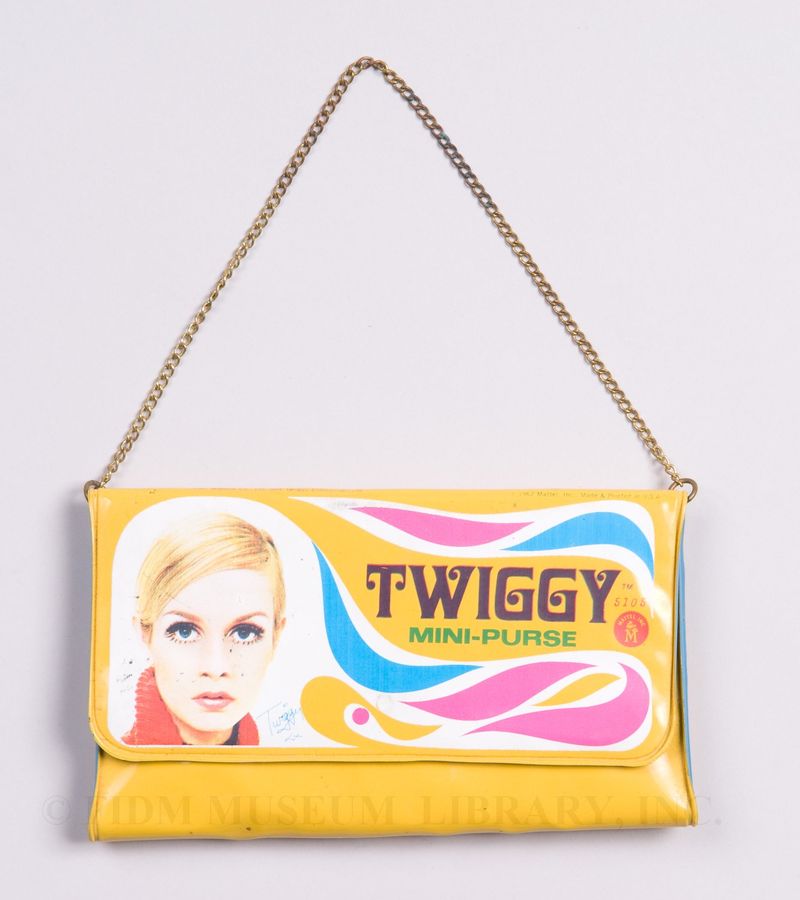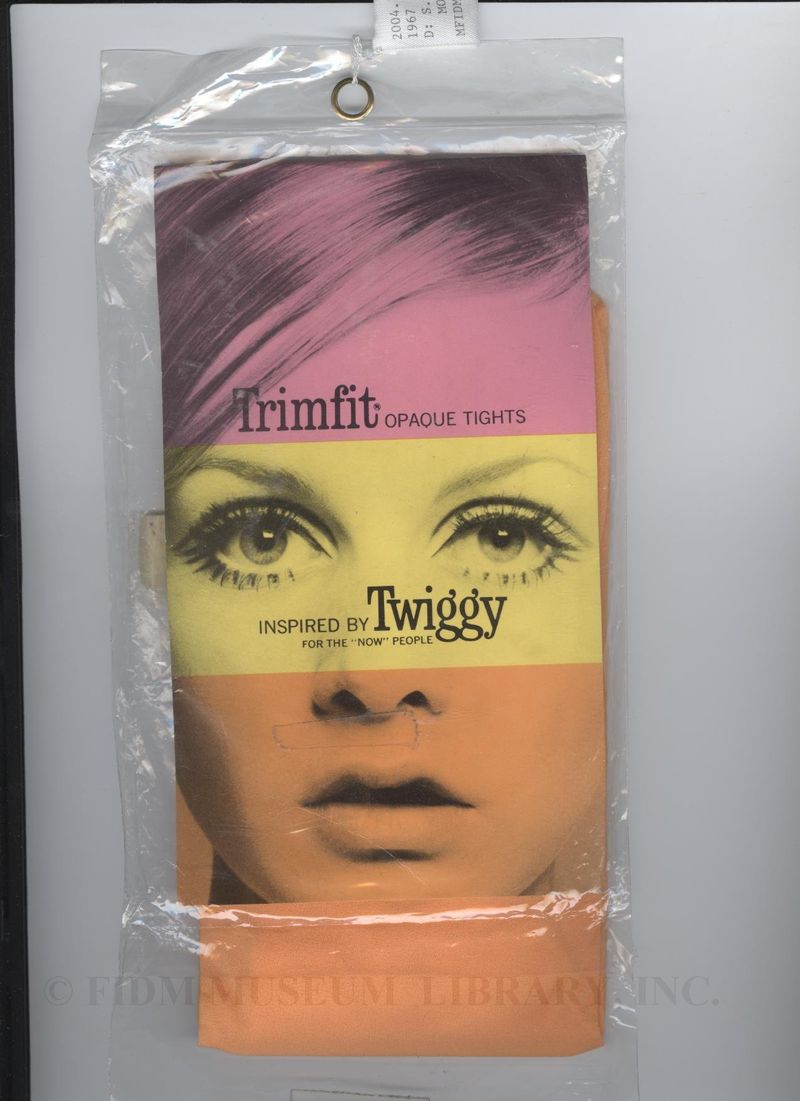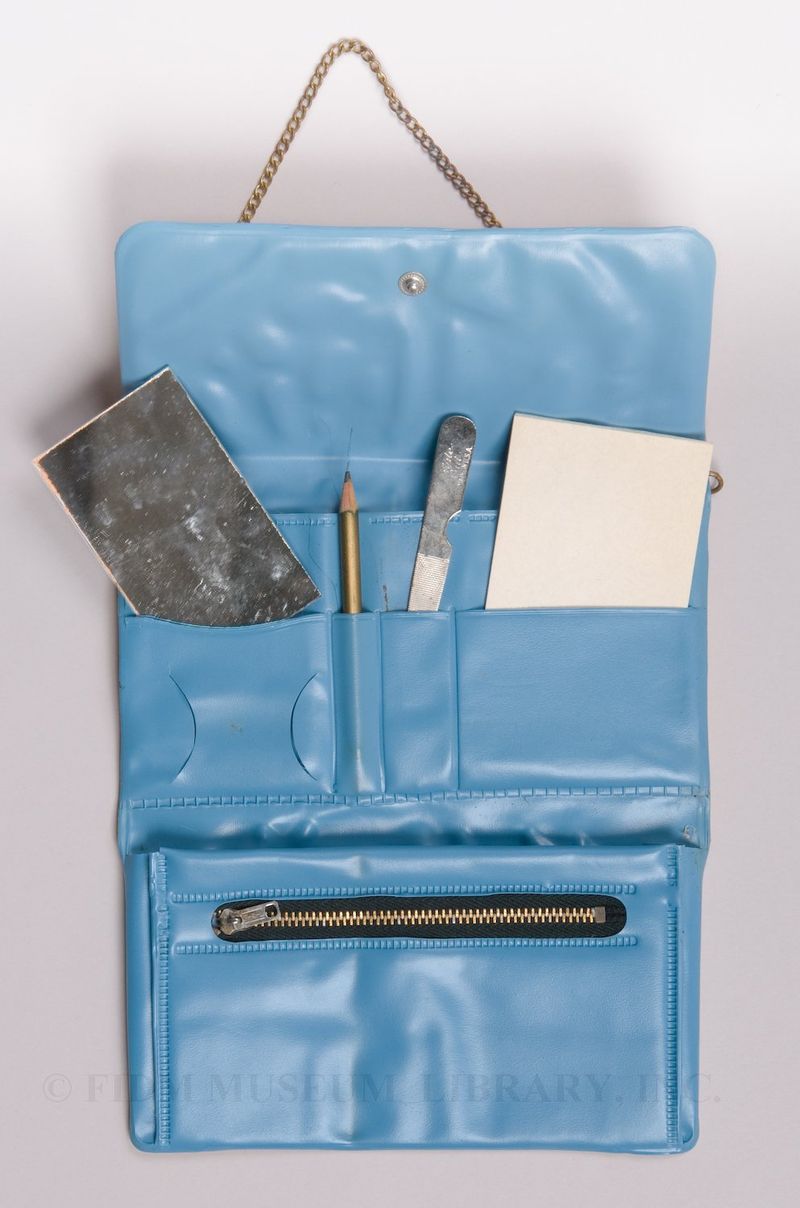Selling the Original Supermodel
"How has this slender young thing, completely unspoiled, unpretentious, in less than one year jumped to the top of the modeling world?" Women's Wear Daily asked on January 4, 1967.1 The "slender young thing" was, of course, Twiggy, born Leslie Hornby in London in 1949. She had booked her first photo shoot for the newspaper The Express the previous February. The resulting spread--headlined "The Look of '66"--was such a success that she had to drop out of school to keep up with all her bookings.
 Twiggy Mini-Purse
Twiggy Mini-Purse
Mattel, Inc.
1967
Gift of Kevin Jones
2006.155.1A-F
In March 1967, the 17-year-old arrived in New York, where she was welcomed by a media circus similar to the one that had greeted The Beatles three years earlier. She made her US Vogue debut days later, modeling French ready-to-wear designed for youthful figures and budgets.2 "Twiggy is called Twiggy because she looks as though a strong gale would snap her in two and dash her to the ground," the magazine explained, adding:
In a profession where thinness is essential, Twiggy is of such meagre constitution that other models stare at her. Her legs look as though she had not had enough milk as a baby and her face has that expression one feels Londoners wore in the Blitz--a look that is essentially British--dogged and touching simultaneously. She has an extraordinary beauty--a beauty that would have been unnoticed ten years ago and would, in any other age, have made her an outcast in the marriage stakes. Her face might have been conceived by a computer to match the requirements of the face of the sixties--bony, pale-skinned, big-eyed, vulnerable, lacquered with a stony stare of arrogance. The look of arrogance is a happy accident. Twiggy wouldn't know what arrogance means.3
At just 5' 6" and 91 pounds, with huge gray eyes and spindly legs, Twiggy resembled a deer caught in headlights, or a child playing dress-up in miniskirts and makeup. But her humble background and approachable personality were as important to her celebrity as her perfectly on-trend "London look." Young, inexperienced, androgynous, and working class, she had freckles, a limited vocabulary, and ;a Cockney accent that inevitably invited Eliza Doolittle comparisons. "In any other decade, these things would have combined to prevent Twiggy's being a success," Vogue noted. "Not any more. She has got to the top." As Cecil Beaton observed: "Today's look comes from below. The working-class girl with money in her pocket can be as chic as the deb. That's what Twiggy is all about."4
Girls with money in their pockets could purchase a wide range of Twiggy-branded merchandise in hopes of emulating her swinging style. Twiggy signed a million-pound ($2.8 million) deal to license her name to a clothing line, Twiggy Styles. It was launched with a runway show in London in May 1967; Twiggy herself was one of the models. Yardley London produced a collection of Twiggy-endorsed cosmetics, including false eyelashes made of real, straight hair. "The look is the same natural innocent look of Twiggy ... her lashes are straight not curly."5 The plastic "Twiggy Mini-Purse" above by Mattel came equipped with a mirror, gold pencil, notepad, nail file, and photo holder. The bright orange Trimfit opaque tights below were "inspired by Twiggy for the 'now' people." Twiggy was also offered film roles, an eponymous TV series, a perfume deal, and a recording contract, which produced a single, I Need Your Hand in Mine, that Vogue called "quite appallingly bad."6
 Tights
Tights
Minnow Co. Ltd./Trimfit
Gift of Stephanie Klein Morehouse
2004.148.5
Twiggy's star burned bright but fast. Women's Wear Daily was suspicious of her from the start, derisively nicknaming her "the paper girl"--not because she was so thin, but because she was so insubstantial. By the mid-1970s, Twiggy had moved on from modeling to acting, and her ingenue looks were considered not just outmoded but downright dangerous due to an alarming increase in anorexia, dubbed "Twiggy syndrome." Vogue estimated there were five times as many anorexics in the US in 1976 as in 1966, 90 percent of them women between the ages of 13 and 30.7 The supermodels of the '70s were more relatable: older and American, with long hair and healthy curves. These women--including Lauren Hutton, Cybill Shepherd, Ali MacGraw, Rene Russo, Beverly Johnson, Janice Dickinson, and Cheryl Tiegs--paved the way for the glamazon cover girls of the 1980s.
1Women's Wear Daily, January 4, 1967.
2Vogue, February 15, 1967.
3Vogue, March 15, 1967.
4Newsweek, April 10, 1967.
5Women's Wear Daily, September 1, 1967.
6Vogue, March 15, 1967.
7Vogue, November 1, 1976.
